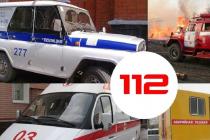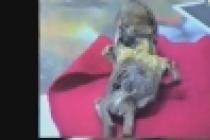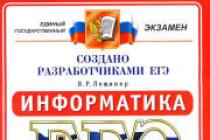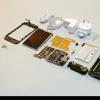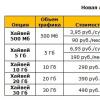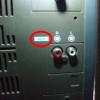Day 4: CUENCA
First of all, I want to draw the attention of potential travelers to some strange feature of the railway transit to Cuenca. Despite the fact that tickets are sold from the Madrid Atocha station (although not "far", not AVE, but "suburban" - Cercanías), in reality the train to Cuenca goes only from the NEXT suburban station - Villaverde Bajo. And it's not mentioned anywhere! Perhaps this is some kind of temporary measure (for a reason unknown to me), since I did not encounter a description of such problems, everyone wrote about a direct train ... But anyway, today the situation looks like this: in the suburban part of the Atocha station, you need to go under the sign "trains of medium and long distances", then - to platform 7. From there, take any train 1 stop to Villaverde Bajo (you don’t need to buy special tickets), and there already go to the 5th path (there are signs), where the train is waiting for Cuenca (after it goes to Valencia). In reality, it departs from Villaverde Bajo 35 minutes later than stated on the ticket from Atocha. Well, back, respectively, also, only in the reverse order - to Villaverde Bajo, then go to the platform with electric trains to Madrid. These are the grimaces... If anyone knows the reason for this absurdity, please share.
One way or another, having lost an unmeasured number of nerve cells to find out what I wrote about above, we safely ended up on the right train. The travel time to Cuenca is about 2.40, the views outside the window are nothing special, the train itself, despite its "suburban" status (tickets without seats) is very decent and differs from distant ones only in the absence of luggage racks and the number of toilets - there are only 2 of them ( in the first and last cars).
Cuenca is a very peculiar city. To be honest, my motivation to watch it was minimal. Well, "hanging houses" (mostly with the prefix "so-called"). Well, yes, a cathedral with a beautiful Gothic facade. And that's it... And that's it? And nothing else particularly noteworthy was offered on the Internet (both on Russian-language and on "their" sites). Now I can say that such a presentation is one-sided and completely incomplete! Cuenca is an absolutely stunning and supremely authentic city! But its authenticity is very different from the cities described above. This is not a Romanesque city, "grown" into the ground. It is a rock city, a labyrinth city, a city of steep ascents and no less steep descents, a city of narrow streets and tiled roofs, sometimes evoking associations with Byzantium. Cuenca is somewhat reminiscent of the Sicilian Erice, only more abruptly, but on the horizon is not the sea, but the Castilian plains...
Cuenca is difficult to navigate even with a good map, because two streets depicted quite side by side may be at different levels and the road from one to the other may lie through a winding steep descent (which is good) or an ascent (which is somewhat worse). In Cuenca, there is no longitudinal-transverse structure of the streets, and if you accidentally turn onto the next street, which seems to be the right one, you can very soon realize that you are going in the opposite direction. And such a mistake can be very costly, because in order to return to the “true path”, you need to go down the hill that you just climbed with such difficulty and groaning (or what else was there in your language? Spain (Cuenca )" title="(!LANG:Authentic Spain (Cuenca)" width="100%">) взобрались и начать покорять другой, соседний (дай Бог вам сил на это! )!}
But let's go in order. From the station to the old town - about 15 minutes not too fast along a straight street (ie the street itself will periodically bend a little, but you just stay on it). The old city appears in front of you somehow suddenly - you just need to cross the bridge over a small river with the indecent name Huescar - and you are in the Middle Ages
Church of El Salvador. Here we turned the wrong way for the first time
The most beautiful domes of the Church of San Felipe Neri:
Ronda Square (Pl. Ciudad de Ronda):
And here it is - the magnificent Cathedral of Cuenca:
The cathedral was built between 1182 and 1270. This is the FIRST (it shares this title with Avila) Gothic cathedral in Spain, to be more precise - in the Anglo-Norman Gothic style, which is explained by the influence of Alfonso VIII's wife Eleanor - the daughter of the English king. As it usually happens, since that time the cathedral has been completed, but the most significant change in its appearance occurred at the very beginning of the 20th century, when one of the towers of the old facade collapsed. After that, in 1902, the upper portal with a triple arched span was built.
To be honest, the cathedral shook. It is very beautiful on the outside (Gothic lovers, I think, will agree with this), but it is also amazing on the inside, which was, frankly, a surprise for us. Let me just say that of all the Spanish (and many others, and believe me, I have seen quite a few) cathedrals, Cuenca left one of the strongest impressions. What a pity that photography was forbidden inside ... I was also struck by its size. Looking at the cathedral from the outside, it is difficult to imagine what huge spaces it contains. Inside, almost along the entire perimeter, there are chapels and aisles, each of which is not like the others. Unfortunately, the cloister - the courtyard is closed to the public ... In general, the cathedral is one of the clear gems of Cuenca
Descending from the cathedral along a winding street, you find yourself near the most famous landmark of the city, for which Cuenca was included in the UNESCO World Heritage List - the so-called hanging houses (Casas Colgadas). Bravo, Cuenca! I bow to the greatest example of management in the history of mankind:) "Make a career" (that is, get worldwide fame), enter all the main books on the world's greatest sights, stand almost on a par with such architectural masterpieces as the Seville Cathedral or the aqueduct in Segovia ONLY for 2 (TWO!) houses with hanging balconies - that's cool!!! By the way, with this tirade, I in no way underestimate the originality and spectacularity of Casas Colgadas, I just want to say how famous these houses lend general idea about Cuenca and, perhaps, even reduces the general interest in it, as was the case with me personally.
Look at the photo. Actually, strictly speaking, not even houses are hanging, they just quite confidently stand on the foundation of a rock, balconies are hanging (and where is it not so?).
However, let's discard logic and grumbling (it was not evil, believe me!) and agree that without these houses the landscape would not look so spectacular:
From the hanging houses through a deep hollow (where the same Huescar river flows, though, its bed has grown a little?) St. Paul's iron bridge was laid. The name of the bridge is explained by the fact that on the other side it leads to the former convent of St. Paul, now a parador. Here are the views on both sides:
Having received plenty of emotions and impressions from such views of Cuenca and its environs, we headed to the very "cape" of the city (the old Cuenca has an elongated shape, tapering in the direction of the old fortress almost to the width of the entrance arch). Here the road was already more or less even (in all dimensions) and passed along the hollow along the stone street:
The street led us to a place with a stunning view of the nearby churches (and just old buildings) with tiled roofs:
From here, from top to bottom, the cathedral is perfectly visible:
And literally 100 meters from here are the remains of a fortress (perhaps built by the Arabs, who, in fact, founded Cuenca at the beginning of the 8th century) and the El Arco de Bezudo arch, through which today you can enter the city (or leave, as this is the local Tren turistico):
Impressive city walls go down from the arch in both directions (according to the relief):
You can climb up to what has been preserved from the fortress and find yourself at the highest point of Cuenca, from where you can see, if not everything, then a lot:
Back we returned along the other side of the city parallel to the river Jucar. The waters of this river have a very peculiar color:
Down - good, up ... probably too ...:
If you are not afraid to turn into such a street, you can get to the church of San Miguel, beautifully located almost on the very slope:
In Cuenca you always look either down:
Shortly after that, we again went to Plaza Mayor near the cathedral, we didn’t manage to have lunch right away, because it was already the lunchtime, and all the restaurants were crowded. However, after walking 500 meters towards the exit from the old city, we tasty, fast and cheap (12 euros per person, including the now traditional bottle of red wine for two) ate in a cafe, which the hungry tourists had not yet reached (but did not have time we still wait for the first one, as the institution turned out to be full). Desserts were especially tasty here (something between flan and pudding).
As a result, we spent about 5 hours in Cuenca, "clean time" in the old city - about four. In principle, this was quite enough (we did not run, did not rush, did not deprive ourselves of anything), even taking into account lunch. But if circumstances allow, it is quite possible to "throw" a couple more hours. At this time, you can, for example, leave the city from the side of the fortress and take a walk along a rocky cliff. Or more like the slopes from the Jucar River. Well, or something else. There are only 4 trains a day from Madrid to Cuenca, and we flew home that evening, so we had to leave by train at 16.20 (there is another one at 19.15 - this is ideal for returning if you have nowhere to rush that day ).
Impressions from Cuenca, as you probably already understood, are the most amazing. Just awesome, to put it in less print :) She is old, beautiful, charming and eminently authentic!
Well, perhaps that's all ... Oh, yes, also the "placers" of turtles that we found in the botanical garden at the Atocha train station:
In conclusion, to all lovers of Spain I want to recommend the book of the English traveler G. Morton (excerpts from which I quoted above) "Walks in Spain. From the Pyrenees to Gibraltar":
From this book, in addition to many interesting facts from the history of Spain, you can learn:
That the Spaniards had a habit of eating shrimp in the morning (the book was written in the early 50s of the XX century)
- what to say in a Spanish cafe if you want to eat soft-boiled eggs for breakfast
- that Saint Teresa was by no means a harsh and dry woman
- that the accomplishments of F. Cortes and V. Pizarro are no less significant than the travels of Columbus
- that Franco's personality is by no means as unambiguous as we were presented
- and much, much, much more...
Thank you all for your attention! Happy travels to all!
About the city and province of Cuenca
City CUENCA(Cuenca) - the capital of the province of the same name, as part of the autonomous community of Castilla-La Mancha (Castilla-La Mancha), is located about 200 km southeast of Madrid (the capital of Spain). The city of Cuenca is located in a mountainous area (Serranía de Cuenca), at an altitude of approx. 1000 m above sea level. The municipality of Cuenca has 56,703 inhabitants (2011). In 1996, the historic center of the city was included in the UNESCO World Heritage Sites.
Despite the fact that evidence of human activity has been found in the vicinity of Cuenca since the Upper Paleolithic period, the city arose during the period of Moorish rule around the Muslim fortress Kunka (Qūnka) built here. Over time, the name became more euphonious.
Kunka became a Christian city in 1177 when the Moorish fortress was conquered by the King of Castile Alfonso VIII. He also gave the city the Code of Laws (Fueros). Textiles were the backbone of the city's economy at that time. Fabrics from Cuenca were widely known, especially in the 15th-16th centuries. Economic prosperity provided an influx of population and sparked a building boom. The crisis that came in the 17th century caused a halt in textile production, which led to the closure of workshops and a sharp decrease in the number of Cuencan residents. Over the next century, attempts were made to revive the traditional craft, however, without much success. Some revival came to Cuenca only at the beginning of the 20th century. Currently, the city lives mainly on income from tourism.
The city of Cuenca is clearly divided into two zones: the old and the new city. The first is located on a stone cliff, which is surrounded by gorges formed by the channels of two rivers: Jucar (río Júcar) in the north and Huécar (río Huécar) in the south. To the east and south of the old city, on the opposite bank of the Huécar river, lies the new Cuenca. Its center is Carreteria Street (calle de Carretería). The new city can also be designated as the lower one, since it is located at an altitude of 920 m above sea level, while the historical part is located at just over 1000 m.
In the historical part of the city of Cuenca, a rich historical and cultural heritage, among which we can especially note: Cathedral and "Hanging Houses", which have become a kind of symbol of the city. Small Cuenca has a surprising number of museums (more than 10), including: Museum of Spanish Abstract Art(Museo de Arte Abstracto Español), Science Museum of Castile-La Mancha(Museo de las Ciencias de Castilla-La Mancha), Museum of Cuenca(Museo de Cuenca). The most interesting cultural events of the city include celebration of Holy Week and (Semana Santa), which is accompanied by a festival "Religious Music Week"(Semana de la Música Religiosa).
ORIGIN OF NAME(toponymy):
The toponym Cuenca comes from the Arabic قونكة (Qūnkatu), and was originally applied only to the Muslim alcazaba (fortress), which was located on the site where the castle now stands (castillo) and only later spread to the entire city.
TITLES:
Cuenca historically belongs to the highest category of cities - ciudad and holds the following titles: "Very Noble, Very Devoted, Most Faithful and Heroic." The title of "Ciudad" Cuenca received from King Alfonso X in 1257, the title of "Very Noble and Very Loyal" was given to the city by Enrique IV in 1465, and the "True and Heroic" Cuenca was made by Philip V, whose side the city took during the War of Spanish Succession.
EMBLEM OF THE CITY
The main elements of the modern coat of arms of Cuenca are an eight-pointed star, coinciding in design with the Bethlehem one and a goblet, similar to the Holy Grail. It is customary to explain the symbolism of the coat of arms that Alfonso VIII gave the city as follows: the star of Bethlehem means the time the siege of the city began (the feast of the Epiphany), and the golden goblet is directly related to St. Matthew's Commemoration Day (September 21), when the city was taken. The red field symbolizes the blood shed by Christians. But not everything is so obvious.
Heraldry experts have found out that the “Holy Grail” appeared on the coat of arms of Cuenca during the reign of the Catholic kings (Isabella and Fernando), and before that (at least since the reign of Alfonso X), an ordinary bowl was depicted in place of the golden bowl. The Spanish word for bowl is Cuenco. It turns out that initially this detail was directly related to the name of the city and was part of the so-called. vowel emblem. It is possible that the star is also part of a medieval information pictogram. She testified to the belonging of Cuenca to the kingdom of Toledo. It is known that the emblem of this administrative formation was a star, which in different historical periods was depicted with six or eight rays.
CLIMATE of Cuenca belongs to the Mediterranean continental type. It is relatively cold here in winter and quite hot in summer. The difference between day and night temperatures is quite significant. This difference is especially noticeable during the summer months. In the city itself, more precipitation falls than in its vicinity, which is explained by the peculiarities of the relief of the mountainous region of Cuenca (Serranía de Cuenca). The norm is 500 mm per year. The minimum rainfall occurs in summer. The record positive temperature of 39.6° was recorded on July 30, 1981, the negative -17.8° on January 3, 1971.
A LITTLE HISTORY:
The first traces of human presence in the province of Cuenca date back to the Upper Paleolithic (Stone Age). The objects found are over 90,000 years old. The first known tribes that inhabited this zone, scientists believe the tribes of beribras (beribraces) and arevaks (arévacos). A little later, the Olcades and Lobetans came here, the capital of which was the city of Lobetum. It is known that in the mountainous region of Cuenca in the III-II centuries. BC. there were military clashes between the Romans and local tribes during the so-called. Celtiberian War (Guerras Celtiberas). After the conquest of the Iberian Peninsula by Rome, there were three significant Roman cities in the territory of the present province: Segóbriga, Ercávica and Valeria. However, the area where the modern city of Cuenca is located was sparsely populated. Near the Castellar bridge (puente del Castellar), archaeologists found only traces of a small village.
The first wave of Arab conquerors (710) did not change the Roman scheme of settlement, but during this period the decline of the old cities began. A little later, the new owners began to establish their own settlements. There is no exact date for the appearance of the Moorish Kunka, but it is known that in 784 the city already existed. It developed so successfully that it soon became the capital of a Muslim principality. After the collapse of the caliphate of Cordoba in 1031, Cuenca became part of the taifa of Toledo and became the base for the conquest of the Moorish kingdoms of Cordoba and Valencia. In 1108, Cuenca passed to the Almoravids - new conquerors who came from North Africa.
Traditionally, it is considered that King Alfonso VIII laid siege to the city on the day of Epiphany 1177. (January 5) and September 21 of the same year entered the city as a winner. At that time, the city was divided into zones according to the religious principle. Muslims lived near the alcazar (now it is the area of Mangana Square). The quarter of the Jews (huderia) was located in the area of the present street of Shoemakers or Sapaterias (calle de Zapaterías). The rest of the city was divided into Catholic parishes.
After the reconquista, the city became the center of the episcopate, a campaign was carried out to relocate new Christian residents to the city. Its success was largely facilitated by the progressive Charter of the city (Fuero Cuenca), which became the prototype of similar city codes granted by the kings to other cities of Castile, León, Aragon and Portugal. In 1257 King Alfonso X granted Cuenca the title of City.(Syudad).
In the XIV - XV centuries, the lower city began to form and the districts of San Anton (San Antón) and Tiradores (Tiradores) arose. At that time, the city prospered thanks to the production of textiles, wool products and developed animal husbandry. Its population has reached 15 thousand inhabitants. In 1588, a plague broke out in Cuenca, after which a decline began that continued throughout the 17th century. During this period, the population of the city was reduced to one and a half thousand. Cuenca was just beginning to recover, as the crisis of the textile industry broke out in the 18th century. Of the 83 industries that existed in 1735, only 22 remained thirty years later. Attempts by the local abbot Antonio Pallafoks to save the city craft came to nothing because of the ban imposed by King Charles IV on the opening of new textile industries. The monarch feared that they could compete with the Royal Tapestry Factory (Real Fábrica de Tapices).
The 19th century also did not contribute to the prosperity of Cuenca. During the Spanish War of Independence (war against Napoleon), the city was sacked 9 times. During the 3rd Carlist War (1874), most of Cuenca burned down. The railroad arrived in 1883. which connected Cuenca with Madrid. After that, a relative economic recovery began, and by 1900 the population had grown to 10,000.
By this time, the historical (upper) part of the city had lost its significance as an economic and cultural center, which moved to the lower part - to Carreteria Street. In the last century, the San Julián Park (parque de San Julián) appeared on the site of the old vegetable gardens near the Huecar River. The development of industry led to the emergence of a labor movement. After the proclamation of the 2nd Republic (July 1931), the socialists managed to gain the upper hand in the elections to local authorities. With the outbreak of the Spanish Civil War, Cuenca sided with the Republic. In the early days, real chaos reigned here, the Cathedral suffered greatly from the actions of anarchists and other *ists. Fighters against religious dope burned the remains of St. Julian, who were in the temple. The Bishop's Palace was robbed more than once. March 29, 1939 Cuenca was occupied by the troops of General Franco.
In the post-war years, the exodus of the rural population to the cities began, which led to the formation of a new Cuenca. The lower city finally became the center of Cuenca, while the historical part turned into a peripheral area that fell into disrepair. In 1963, Cuenca and its environs received the official status of "Scenic Landscape". This, as well as the opening in 1966 of the Museum of Spanish Abstract Art in the so-called. "suspended houses", returned interest in the preservation and tourist promotion of the historical part of the city. In December 1996, UNESCO declared Cuenca a World Heritage Site.
HOW TO GET TO AND MOVEMENT IN THE CITY
A TRAIN
The train connected Cuenca with Madrid and Aranjuez in 1883. In 2010, a new Cuenca Fernando Sobel train station(Estación de Alta Velocidad Cuenca-Fernando Zóbel), designed to receive high-speed trains. It is the first stop on the Madrid/Castilla-La Mancha/Comunidad Valenciana/Murcia express line. Cuenca can be reached by high-speed train from MADRID, VALENCIA, ALBACETE, ALICANTE, CASTELLON, SEGOVIA, VALLADOLID, LEON, GJJON and OVIEDO.
AUTOMOBILE
Cuenca has long been located at the crossroads of various routes from the North from the Center of the Iberian Peninsula to the Mediterranean Sea. Now the following roads lead to the city:
Freeway A-40 near the city of Tarancón it connects to the A-3 motorway (Madrid - Valencia, via Albacete).
Highway N-320- between the cities of La Gineta (province of Albacete) and Venturada (province of Madrid). Links Cuenca and Guadalajara.
Highway N-400 links Cuenca with Toledo.
Highway N-420 from Cordoba to Tarragona.
MOVEMENT IN THE CITY
The old town is small and there is no particular need to use public transport. The new city has buses and taxis.
HOLIDAYS IN CUENCA
Holy Week Cuenca(Semana Santa en Cuenca) is included in the list of holidays of International tourist importance in Spain. The most significant event of the week is the procession "The Way to Calvary" (Camino del Calvario), which the inhabitants of the city call "Las turbas" (Las turbas).
Religious Music Week(Semana de la Música Religiosa) is also one of the events of international tourist importance in Spain. Famous performers of religious music, both from Spain and other countries, perform at the festival. Viewers can hear not only famous works, but also new works by contemporary composers.
Feasts of Saint Julian(Fiestas de San Julián) are celebrated at the end of August. These days, the townspeople have fun at the craftsmen's fair, watch performances by theater groups, arrange solemn processions along the city streets, listen to outdoor concerts, revel in bullfights.
Feasts of St. Matthew or San Mateo(Fiestas de San Mateo) are celebrated from 18 to 21 September and are among the holidays of regional importance in Spain. These days, the inhabitants solemnly celebrate the conquest of Cuenca by King Alfonso VIII of Castile. According to oral tradition, the holiday has been celebrated since the time of the reconquista, but the first known written document that establishes and determines the order of celebration dates from September 19, 1581. One day, the standard of Alfonso VIII, accompanied by a solemn procession, leaves the Cathedral, the place of its permanent storage, and remains overnight in the building of the city hall (Ayuntamiento). Playing with young bulls in the makeshift arena of Plaza Mayor is one of the most popular events of the holiday.
GASTRONOMY in CUENCA
The traditional cuisine of the province of Cuenca was invented by people accustomed to hard physical labor: shepherds, hunters, carters... People of these professions needed simple and high-calorie food. The harsh natural conditions of the province also influenced the gastronomic preferences of the inhabitants of the province.
The main ingredient in many Cuencan dishes is game, which is primarily represented by partridge (perdiz). The meat of this bird is found in many recipes, including "morteruelo"(morteruelo) - the most famous culinary product of the province of Cuenca. The second most popular product is lamb meat (el cordero). True, in Castile-La Mancha it is eaten everywhere. The inhabitants of Cuenca love garlic, and they cook on its basis "ajoariero"(the second important ingredient is cod). Bread is added to most dishes. They make from it toast(las migas), used in the local version of gazpacho.
When fasting time comes, and meat dishes have to be excluded from the menu, the inhabitants of Cuenca switch to fish. They are cooking thick chickpea soups(chickpeas) with cod and spinach, indulge in trout from local rivers.
DESSERTS
"Alahu"(alajú) the brightest representative of local desserts has clear Arabic roots. As a rule, this sweet is made from almonds and bread crumb, with the addition of honey. There are other options where ordinary nuts or figs play the role of almonds.
Popular in Cuenca are fried toasts made from bread soaked in milk, with sugar or honey, cinnamon biscuits, raisin rolls, round donuts (rosquillas fritas).
WINE & LIQUOR
On the territory of the province produce wine, which by its origin belongs to the DO La Mancha (Denominación de Origen La Mancha). The white and red wines of this wine region are quite interesting.
Resoli liqueur(el resolí) is considered the most typical alcoholic drink of the city of Cuenca. It is made on the basis of grape vodka with the addition of coffee beans, cinnamon, orange peel and sugar. Drink "resoli" necessarily with ice. In small quantities, this liqueur aids in digestion.
INTRODUCTION HOW TO GET TO AND MOVEMENT IN THE CITY HOLIDAYS FOOD>>> >>> (life program for 48 hours)
The roosters began to crow before five o'clock in the morning.
“I’ll drown in the pool, pluck my tail alive, stretch my neck like a swan’s ...” - apparently, the stay in the homeland of the Inquisition and other auto-da-fé had an effect, since there was enough time for a malicious enumeration of the alleged painful executions for non-shut-up reptiles almost until the expected rise at eight in the morning . More specifically, we were eight kilometers from Cuenca, a city on the abyss, one of the most picturesque and memorable Spanish cities.
“The 174th kilometer of the highway to Madrid, check with the hotel administration for directions,” I confess, the presence of coordinates for the navigator made me very light-minded about this booking.com remark when booking, and the letter sent the day before from the hotel, where in Spanish it was described where and how to turn to them (it would be better if they drew a diagram). We had two cases when in the villages (one beyond Chamonix-Mont-Blanc, the other in the Austrian Hittisau) the navigator led us to an open field, but we figured it out on the spot within a few minutes.
I wish I had translated that letter.
And she kept it.
But - in order.
We booked the Hotel Boutique Pinar due to the high reviews and the desire for variety. During the trip, we booked various hotels: both modern and in buildings of the XV-XVIII centuries (which, in principle, is not something extraordinary for Spanish cities). This family-run hotel in the countryside was supposed to promote immersion in the local outback. The ratio of price and reviews was especially striking: for a bungalow for two with breakfast and parking - 68 euros, a review score of 9.2 points.
When booking, we were asked to call half an hour before arrival due to the lack of a call and the need to light a fireplace (and, as it turned out, a titanium water heater). I called when the hotel was 25 kilometers away, my English was enough for me to taldyknut, this, they say, we booked a room, we will be in 30 minutes. The tube in a woman's voice answered in confusion: "Momento" - and passed out. A few minutes later, a younger one calls female voice, to which I again muttered my deliberate monologue (I am an absolute linguistic mediocrity, for which I suffer).
We leave the Madrid highway, drive up to the estate, immersed in foliage. The gates are openwork, wide open. Andrei left, waving the Bookingcom booking sheet. He returned dissatisfied: everything looks neglected, abandoned, not a single living soul. We waited a few minutes. Then they decided that the coordinates are always not quite accurate, and this time they roughly showed - here. Let's go further and deeper, look for our Pinar. The neighborhood around us was very reminiscent of our suburban areas, only the dogs there did not throw themselves at the fences with a growl, but happily wagged their tails and stood up on their hind legs in impatience: to play, to play!!! At one of the sites, the first living souls were found - elderly seniors. The seniors chewed their lips for a long time, reading our reservation. As a result of the discussion of the issue, it turned out that we were five kilometers from the target, we had to go back.
When we returned to the junction to the highway, there was again phone call: it was a worried girl from the hotel. As I understood, her level of English was approximately the same as mine. We tried for a long time to figure out where we should go, and she, apparently, on her fingers, showed the direction of movement. In the end, Andrey got angry and, following a blurry pattern on the booking sheet, took us to the right place within a few minutes. In which two Spaniards were waiting for us - a mother and daughter. They were so sincerely happy for us and began to wave their hands, explaining how to put firewood in the fireplace and how to turn on the air conditioner for heating, which we all understood in Spanish. Their attitude was so warm and benevolent that we decided to consider the incident with the coordinates an unfortunate misunderstanding and consign it to oblivion. Moreover, everything else was just wonderful: 


After the crowded festival in Valencia, we found ourselves in absolute silence. In addition, the rain that overtook us on the way intensified. He was going to... 

And finally caught up with us on the road:

The fireplace was a good alternative to walking in the rain without an umbrella, so we decided not to crawl out anywhere in the evening, but to get up early in the morning and go to Cuenca.
Early, early, but not at five in the morning! Damned roosters!
At the agreed eight in the morning, the housewives brought breakfast in a huge basket:

Thus the evil roosters were also forgiven...
So, Cuenca.
Cuenca, as I already mentioned, can be safely called one of the most memorable and unusual Spanish cities. Its historical center is located on a hill (height - about 950 m above sea level) and is surrounded by rivers - Hukar and Wecar(in Spanish it is written almost indecently - Júcar and Huècar). Here below one of them winds like a ribbon, which is smaller - Uekar: 
The strategically advantageous location made the city attractive first for the Romans, then for the Arabs. After coming under the rule of the Castilian crown, Cuenca became a developed and wealthy city, in the Middle Ages the main occupation of its inhabitants was cattle breeding, carpet weaving and weaving in general, many architects of that time found application for their talent and craft in the city. But in the 16th century, the city experienced a series of troubles: plague, drought, locust invasion, death of livestock had fatal consequences for the city - there was no trace of its medieval prosperity. Attempts to revive the crafts by the local bishop two centuries later were also unsuccessful.
In 1996, the city of Cuenca was inscribed on the UNESCO World Heritage List as one of the few well-preserved medieval cities. The visiting card of Cuenca is the houses hanging over the mountain precipice and the unique karst landscape in the area.
Here is such a necessary introductory.
Unfortunately (how often, unfortunately, this word form is found in travel stories - “unfortunately”), we got acquainted only with the historical part of the city. See on the map, on the right upper corner- "elephant's trunk"? this is exactly the same, “sublime” part of Cuenca: 
The car was left in the covered parking - the one shown below. It is hollowed out in a whole rock: you go - and next to it are the walls of the tunnel, real, rock. We leave the parking lot and immediately fall under the amazing charm of this place:






By that time, we had already seen enough cathedrals in Catholic Spain, so it seemed that it would be difficult to surprise with another cathedral.
Difficult does not mean impossible.
We verified this by going to Cathedral of Saint Mary and Saint Julian in Cuenca
- Catedral de Santa Maria y San Julian de Cuenca.
The unusual facade “in the style of Norman Gothic” (it’s not me who is so literate - a guide) could not be fully enjoyed - the work was in full swing. So I had to focus on the details of the main portal:


From the Plaza Mayor, the cathedral looks exactly like this - compact: 
And now we look at the diagram: see where the arrow is the entrance? This smallest side is the main facade of the building:

So the actual dimensions of the cathedral, and the bizarre layout of the building, are something unique.
In Cuenca, we rediscovered the Spanish axiom: whatever the city, the cathedral must be magnificent! You will not find Protestant restraint here:




Moving from one interior to another was very exciting: a small opening awaited behind each door.
It could be a surprisingly lively and tragic image of the suffering Christ:

Or the unexpected baroque interior of one of the chapels:

Or artfully decorated vaults: 
But behind this door...

... opened the spectacle of the most magnificent carved ceiling of complex geometry that I have ever seen:


It seemed that sharp peaks could be practically reached by hand:

And the stucco decorations! Here you have angels, and quite the contrary - a skeleton, symbolizing the triumph of death and the transience of human life:


Suddenly:

But the main discovery was the unusual "Last Supper" - this sculptural image of the apostles and Christ sitting at the meal could be viewed from all sides and find more and more details and details:


That's just without a flash, I see, it didn’t turn out very well, well, thanks for taking pictures at least like that!
Let's go back to the Plaza Mayor.

The arcaded building is the Consistory of Cuenca, the local city hall.
Military vehicles on the square held back our continuous photographing, from sin, they will write down as spies ...
So we leave behind the cathedral, where we come across a unique image of St. Joseph with the Christ Child:

And also on the ruins of the old church:


Mysterious and incomprehensible...
Another unusual church in Cuenca is the Church of St. Peter.

Her main feature is that on the outside it has an octagonal shape, and on the inside it has the shape of a circle:


Here we met another sculptural composition, in my opinion, it was a scene of the captivity of Christ by Roman guards:




In the building of the monastery today there is a hotel-parador, the cost of rooms overlooking the hanging houses and the gorge is absolutely inhumane.
The further you move to the outskirts of the historical part of the city, the more breathtaking the view of the city and the nearby karst landscapes opens up:



Yes, this view first makes you jump with delight, and then makes you think about something sad and bright ...
But with our pace you won’t stay too long, we’re going back, only now we’re taking it higher than the hiking trail:


From the side of the Hukar River in the courtyards of residential buildings - solid gardens:




Near the dilapidated walls of the castello -

… an information board listing possible walking routes. Immediately, the reflex is turned on, “Next time, you must definitely ...”

You want to slowly move along such streets, moving from one visual “hook” to another: 



The passionate voice of a guitar can be heard from afar. Someone in a low, hoarse voice, no, does not sing, does not play, but suffers, lives in a song. The sound beats among the closely standing houses and spreads over a bizarre amplitude. We leave: these are two local alkonauts, kissing the bottle, collecting for the next one. Honestly, record them and put them on the radio - it will be a hit! I still regret that I only took a picture. 
Finally, we approach Casas Colgadas.
The famous "hanging houses" are a symbol from the category of those depicted on souvenir plates and stamped on magnets. What to do, this is really the calling card of Cuenca:



Although the view from the San Pablo Bridge is equally good in all directions - wherever you look: 




Already returning to the parking lot, we saw the Mangan tower towering above it - this building combined the functions of a bell tower and a city clock. The tower was repeatedly rebuilt, and during our visit to the city, several people crawled along it, which, apparently, meant certain repairs:

Cuenca has become another city with its own unique "facial expression", which cannot be confused with anything. 
On this last day on Spanish soil, we were to see
“For the most part, in old Cuenca, they built as God would put it, sculpted one on top of the other - as a result, quite harmonious “hanging favelas”, a kind of overgrown Florentine ponte Vecchio, were obtained - only not above the water, but above the rocks. To live in these houses, in my opinion, is impossible: a window - and 30-40-50 meters of the abyss. But nothing, they live, even the clothes are dried.Narrow streets are charming, climbing/descending between the houses in complete chaos. Children run around with water pistols and, seeing foreigners, stop playing, staring at you, as if for the first time in their lives they saw a black man. An old woman in a simple jacket has put a chair at the threshold of her two-story house on a tiny square and is boringly knitting a simple rug. Her old man, wearing glasses on his nose, carefully reads the newspaper. Seeing us, the old woman looked up from her knitting for a moment, the old man did not even raise an eyebrow. And the courtyard is so pretty that it is impossible not to take a picture. Click-click: zero attention, a pound of contempt! (with) dogana
Why go
In no other Spanish city did I get such a poignant sense of the “medieval” as in Cuenca. It is authentic without showiness, without crowds of tourists who know better than a guide where to go and what to shoot. Cuenca is not a huge scenery, like, it is alive, real, sincere, and this is its charm: in these narrow crooked lanes that either lead you up or rapidly descend, in these hermitages hidden in the folds of the mountain, in these the ruins of an Arab fortress, and in this sunlit area on a cliff, from where the city and the gorge are in full view ...

From the station to the Old Town you are across the road and to the left along the street, focusing on a sign with yellow letters Hostal Cortes, or something like that. Walk for 5-7 minutes, on the left there will be a mansion where in the park stands, as I called it, a monument to the crusader - it looks like a knight of the Teutonic Order, laying his hand in a plate glove on the head of some representative of the conquered people.

As a guide, there will still be a supermarket on the right. When you find yourself in front of a real mountain, sprinkled with houses, and under your feet there is a tiny river, which, however, has created a gorge over millions of years, which we will soon see, you are in place, you can start climbing to the Old Town - to the left, behind the Franciscan monastery and past the Puerta de Valencia.

Having walked the whole city from top to bottom on foot, from the foot, where the railway station is located, to the observation deck at the very top, I will share the following thought: regular buses run around the city, from the station to this very observation deck (I won’t tell you which route, but, you can probably ask right at the station what goes at least to Plaza Mayor or Castello de Cuenca). Significant savings in time and effort will be to ride on such a bus to the observation deck, admire the city, and from there already go down - to the hanging houses, the cathedral, the Plaza Mayor and other attractions.
And it is worth seeing the baptismal font, the sacristy and a small museum of the cathedral, the tombstones of the first bishops of Cuenca. Entrance cost 2.80 euros. You can admire the facade, doors and carved windows from the outside and completely free of charge.
Returning to the Plaza Mayor, it seemed to me that it was too small for such a cathedral, it would be more suitable for a vast space around, and the Plaza Mayor is somehow cramped for it. Yes, and traffic on the square should be banned, otherwise it’s unglamorous: I rented a building with an arch through which we passed to Plaza Mayor, only on the third or fourth attempt - all some kind of bus got into the frame. On the other hand, I can’t help but note that, apparently, the road going through Plaza Mayor past the cathedral is the only one, so there is simply no other way for transport ... But the square is still nice: multi-colored facades of buildings with wrought-iron balconies (I don’t time is interesting - and who controls the painting of facades?

City Hall? Building owners? What if two neighboring buildings will have the same color - this is bad manners!). A bright pink facade to the left of the cathedral, with an oval window above the entrance and a round one in the center - the monastery of San Pedro, next to it - the church of San Pantaleon, restored so long ago, and, apparently, for so long that this fact is even reflected on the map cities - "restored".

The linen, which I have already mentioned, is dried even on the Plaza Mayor - it is boldly rinsed on the balcony overlooking the cathedral.

If you go along the street that is from the cathedral, on the right, you will see the yellow episcopal palace (XVI-XVIII centuries) and the Museum of the History of Cuenca (which we safely ignored). But from here you have a view of the delightfully disordered urban development. It would seem - well, how can such a disgrace be picturesque? And here! Looking at houses-houses and small houses, you catch yourself thinking that the windows were often broken through as needed - there is so little logic in their arrangement. Oh, and there is some kind of blue dome on that volume. And this would not be prevented by repairs (every second building, but these are trifles). And the facades of some houses, especially zealously clinging to each other in front of the cliff, are surprisingly narrow. Perhaps the tax on the width of the façade raged here too?

On the side of the episcopal palace, a large cross hangs on the wall, above which is the inscription - José Antonio Primo de Rivera, and around the wall - as if blood stains. … the next street leads us to the famous hanging houses.
Hanging houses (Casas Colgadas)

Once upon a time, the entire gorge was covered with such hanging houses, clinging to the rock. Now there are much fewer of them, but for some reason guidebooks write about those two (XIV century), in one of which kings once stopped (which is why it received the proud name Cas del Rey), and in the second there is the Museum of Abstract Art (it is called Casa de la Sirena - House of the Mermaid). Of course, the houses were restored, but still they amaze with their defiant antiquity. But the arch of the entrance to the right building was moved here from the old, but alas, ruined palace of Villarejo de la Peñuela. It seems to me that the best view of the hanging houses and the gorge is from the other side of this very gorge, but for the reasons described below, we did not get there ...

San Pablo Bridge

So, having rounded the hanging houses on the left, we along the authentic alleys reached the gorge, where they appeared before us in all their glory:
1. actively (and insidiously!) restored bridge of San Pablo,
2. San Pablo Monastery (now a parador), inaccessible for this reason, on the other side of the gorge, from which we intended to climb a special tourist path up the hill and look at the statue of Christ on the mountain, and also appreciate all the “hanging” of the gorge houses ,

3. as a consolation pryz - a funny statue of a saint with a lamb.

We are lucky with bridges this year: in January, we were deceived by the San Pablo bridge here, in July we only admired from afar the medieval bridge in Spoleto ... it was also closed to the passage due to the restoration of one of the fragments ... On the other hand, as I recall the bridge over the gorge in Bern and what dizzying views open from it - until now all the hamstrings are cowardly ... Although it is interesting how I would feel when the Kuenkovo bridge would shake under my feet in the middle of the gorge ...
Monastery of San Pablo
The ancient Dominican convent was built on the other side of the gorge opposite the hanging houses in the 16th century, in the Rococo style. They just went to him for a long time - along the bottom of the gorge, and now (when the repair of the bridge is completed) it takes several minutes to cross the bridge. Of interest is the monastery gothic church of San Pablo, and since the monastery now houses a tourist hotel - a parador - I wonder if it is operational, or more like an attraction for tourists: is the view from the window - a church? I suspect that the views from the monastery to Cuenca are amazing ...

So without getting to the other side, we decided to bypass the cathedral, going to the Plaza Mayor from the other side. This is what they did, having examined the palace, which was practically blown to dust (the walls remained intact, probably, they will stuff the house with modern offal, and from the outside it will still delight the tourist’s eye with its authenticity), the ruins of the church, from which only fragments of the walls have survived, and in the center sits a bronze monument to some local poet. A nice touch: in the house opposite this church, the entrance arch and a piece of the facade above it are so different from the appearance of the rest of the building that the thought involuntarily arises that once from the old building, standing on this very spot, there was only a piece of the facade, and the foundation, and so that building materials would not disappear, a new building was erected here.

We admired the elegant old building of Colegio de san Jose, with coats of arms and a statue of Christ with the Child, in which now there is a nice, must be a hotel ...
One of the arches led us to the small square Plaza de San Nicolas, on which stands the church of St. Nicholas (XIII-XVIII centuries), with a simple rectangular facade, with a simple round window above the entrance.


There is another monastery in the neighborhood and even some glamorous museum, but we have already begun our descent along the utterly ancient and terribly zigzag Pilares path.

Ah, what views of the gorge from the other side of the hill! What masonry walls of houses and stairs! What bizarre pieces of rock! What lights! It seems that over the past 600 years, the city has not changed at all on this side ... Having dived into the arch in the rock (it is called Postigo de los Descalzos, “the back door of the barefoot”),

we see the Franciscan monastery on the left,

Skete of Anxiety (Ermita de Nuestra Señora de las Angustias)

The path along which we walked passes into a platform in front of the skete, paved with large flat stones. At some distance stands the skete itself: a composition of a pink central part with an elegant baroque entrance and two side outbuildings, simple and severe. The skete was founded in the 14th century, on the site of a local hermit's hut that once stood here, and was dedicated to the Madonna, the patroness of the diocese. The place is revered, in the Middle Ages it was not overcrowded with pilgrims, I suspect that the monastery on the way to the skete was not built in vain - pilgrims had to be received somewhere. Inside there is a statue of the Madonna, whose cloak every self-respecting pilgrim must kiss. The views from the skit are stunning too!

From here we again climbed the zigzag ladder, and along San Pedro Street we went to the church of the same name, shaped like Byzantine churches,

and the former monastery of the Carmelites, where the Antonio Perez Foundation is now located.

The quarters here seem to be especially old, which is not surprising, given that we came to the oldest part of the city, where from Arab times rises
Cuenca Castle

Nothing remains of the Arab citadel itself: a few fragments of the wall, a pair of turrets and the Bezudo arch - the oldest parts of the current fortress - date back only to the 16th century.


On the other hand, several castle levels serve as excellent viewing platforms: from them all the gorge and small houses at its bottom are in full view, and only then you understand how the whole city is “hanging” in a foggy haze. And the parador is generally good indecently.



But in order to finish ourselves off completely, we rush up through the gates of the fortress, for we have to see


Panoramic view of the city (Vista de la ciudad desde las Hoces del rio Huécar)
Beyond the gate, the road becomes many small paths that encircle mountains and individual boulders. City in all its glory, panoramic; a parador that looks like a ship from here, in full view. The views are just unreal. It's useless to describe it. The eye picks out cypress trees on layered slopes, bizarre "tongues" of rock, on which my husband immediately begins to jump in search of a good shot - and my blood runs cold - high, unreliable. But what a surprise below! Abandoned gentle steps lead from the fortress to the ruins - I wonder what was there - someone's castle or just a military warehouse ...

The platform is arranged conveniently: a review in all directions. Those who wish can even take a number of walking tours - signs point in five directions. Those especially fond of walking can enjoy as many as ten kilometers of landscape, listed as a UNESCO World Heritage Site. But we had neither the strength nor the desire for this, so we limited ourselves to creating mega-photos. Why my husband, happily rubbing his hands, took out and began to set up a tripod. While this procedure lasted, I even dozed off on a bench, warmed up in the sun. The sun is very warm and very bright there, but the wind is treacherous. On the site, admiring the city, we stayed (sitting, standing, walking, climbing) for about an hour.

After such a time, having been here in peace and quiet, you perceive this territory exclusively as your own, and when some tourist family moved to the site from the stop, I involuntarily bristled with all the thorns: what is it, where are you crawling, it’s only mine

But for a snack (as if anticipating that you wouldn’t want to go down from there at all) we had prepared
Church of San Miguel

The Gothic church, built of stone, was erected here in the 13th century (the apse is still preserved from that time). Restored in the 18th century, and since then, as a religious building, it has not been used, but only for concerts and exhibitions. But if you get inside, you will see the interior decoration in the Mudéjar style. Three authentic staircases lead from here (or here): we came here along one (it is the leftmost one, if you stand with your back to the gorge), the rightmost one leads to the arch where the tourist office is located (on the Plaza Mayor), and we decided to go along the middle staircase - it was dark and cold there, with dusty lanterns hanging from the beams. But we went out into another arch - at the monastery of San Pedro on the Plaza Mayor. On the way back you can look at
Church of the Virgin of Light (Iglesia de la Virgen de la Luz)
A beautiful urban legend says that on this very spot the Virgin Mary appeared to King Alfonso VIII and ordered to build a skete here, which was done immediately. True, at first it was the monastery of St. Anton (San Antón), dating from the 14th century, and only in 1523 the current rococo church was built here, dedicating it to the patroness of the city (1764, interior decoration by José Martín Aldehuela).
“If during the day we still met a few tourists, then towards evening he slowly disappeared from the streets of old Cuenca. So far, the small popularity of Cuenca among foreigners in our eyes only added charm to the city. In Toledo, where we will arrive a day later, the daytime tourist crowd in the narrow streets and herds of German-Japanese groups, in a dense mass of people following the guides, is sometimes simply unbearable. And here you and the city are practically alone with each other ... "(with)
Today we present you an article on the topic: "Sights of Cuenca" with full description where to go and what to see. We also offer interesting comments from travelers.
The medieval city of Cuenca in Spain is considered by many to be the most beautiful place in the country. Built on the rocks, Cuenca enchants and presents guests with many discoveries.
If you come to Valencia or Madrid, try to find time to visit the picturesque city hanging over the abyss.
Old city of Cuenca.Cuenca is not just a medieval museum. It is the capital of the province of the same name, which is part of the autonomous community of Castile-la-Mancha.
The town is unique in its location: it is located on a hill in the middle of a deep gorge. On both sides, bizarre rocks are washed by the rivers Hukar and Huekar.
According to historians, Cuenca was founded at the beginning of our era. Then the ancient Celts lived on this place, who chose it because of its favorable location. From the height of the rocks, an excellent overview of the surroundings opened up, and the enemy could not go unnoticed.
Over time, the city was captured by the Arabs, who gave it its name, and in 1177 Christians led by Alfonso VIII entered Cuenca. Therefore, it, like many Spanish cities, is a combination of different architectural styles.
The city has experienced ups and downs over its long history.
In the 16th century, it suffered an epidemic of plague. Then natural disasters, religious strife, economic crisis.
But in the 20th century, tourists began to come to Cuenca, which was the beginning of development.
Since 1996, this unique place has been protected by UNESCO.
Despite the modest size of the town, it surprises with an abundance of attractions.
Hanging houses, which in Spanish are called Casas Colgadas, have become a visiting card. Located in the old town behind cathedral, they seem to grow out of the mountains and look very colorful.
Now, in the houses that hang over the city like swallows' nests, there are local historical monuments, as well as a restaurant.
Hanging houses.But besides them, Cuenca has something to see.
There is expanse for photographers and artists, and while walking along the narrow streets, it is worth seeing famous tourist sites:
The most popular exhibit of the city of stones is Tormo Alto - a natural monument in the form of a giant mushroom.
Cathedral.Museums of Cuenca are also worthy of attention. Here are three recommended visits:
- Museo de Cuenca with the finds of archaeologists;
- painting museum, located in the House of the Mermaid soaring over the abyss;
- museum dedicated to the fauna of the autonomy .
It remains for a tourist to make a difficult choice, how to see so many interesting things in one day.
Cuenca (Spain) - the most detailed information about the city with a photo. The main attractions of Cuenca with descriptions, guides and maps.
Cuenca is a city in Spain in the autonomy of Castile-La Mancha. It is located between the gorges of the Hukar and Huekar rivers a little to the east of the geographical center of the country. Cuenca is one of the most beautiful medieval cities in Spain, whose historical center is located on a picturesque rocky plateau and is included in the UNESCO World Heritage List. Thanks to its old cobbled streets and ancient architecture, Cuenca has perfectly preserved its historical atmosphere, and the famous houses hanging over the rocks, and, as if growing out of them, create a simply magical sight. This place is ideal for wandering through the ancient streets, which offer picturesque lanes, fascinating historical monuments and fabulous views at almost every turn.
The city of Cuenca is located slightly north of the geographical center of the autonomy, halfway between Madrid and Valencia. It is divided into two parts: Old and New Town. The historical center is located on a rocky cliff, bordered by the gorge of the Hucar River in the north and its tributary, the Huecar River in the south. The city center is located at an altitude of 997 meters above sea level. The climate is Mediterranean continental. Summers are hot and dry, winters are cool with rare negative temperatures.
Old cityBest time to visit: April-June and September-October.
- The population is 54.9 thousand people.
- The area is 911.06 square kilometers.
- The language is Spanish.
- Currency - euro.
- Visa is Schengen.
- Time - Central European UTC +1, summer +2.
On a high rocky cliff at the beginning of our era, a Celtic settlement arose. Later, the Romans came here and founded a small fortress with a garrison here. In 711 Cuenca was captured by the Arabs. During the Moorish period the city was called Kuvenka. By the middle of the 12th century, there was a fairly large settlement with well-fortified walls.
Evening in Cuenca


